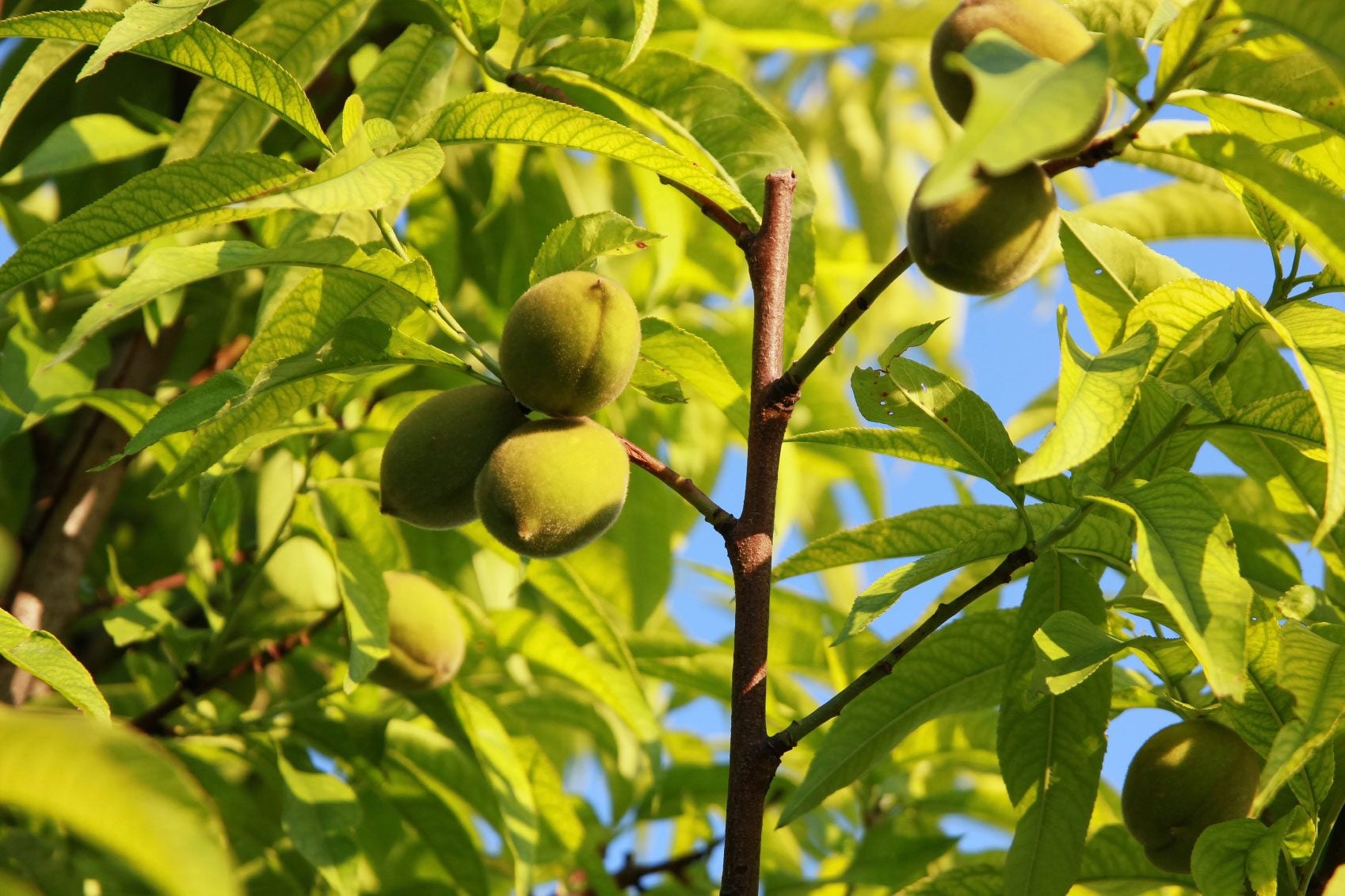Peach Tree Thinning - How And When To Thin A Peach Tree


“They're beautiful when they bloom, but the fruit is worthless. There's plenty of it, but it's always so small and rock hard.” The gardener above is talking about two peach trees in her backyard. She's not alone in her complaint. Many backyard gardeners consider their peach trees to be strictly ornamental because of the poor crop they produce. What these gardeners may not know is how to thin peaches on a peach tree to improve quality and size.
Reasons for Peach Tree Thinning
Each piece of fruit that remains on a tree must get its share of nutrients from the parent tree. When branches are overloaded, each fruit receives a smaller share. There's simply not enough water and nutrition to go around. The result is small fruit with hard, moisture-less flesh. Overloaded branches will sap the tree's resources and weaken it, making it more susceptible to disease and decreasing its lifespan, so knowing how to thin peaches isn't just for our eating enjoyment.
When to Thin a Peach Tree
A properly thinned peach tree is healthier and provides a greater yield of edible fruit. When to thin a peach tree depends on what method you choose. There are several ways for thinning a peach tree at different times during the growing season, so you should find one that best fits your gardening schedule or perhaps try more than one. All are based on the tree's natural growth and production.
How to Thin Peaches
Method 1 for Thinning Peach Trees
The first method of peach tree thinning begins with the dormant tree. Pruning crossed branches and opening up the center of the tree to the shape of a wide bowl will decrease the number of branches where blossoms form and allow more airflow and sunshine to reach the remaining fruit. Mid to late February is when to thin a peach tree through pruning. It's the time after the worst of the winter freeze is over, but before the tree leafs out. Pruning too early can cause its own set of health problems, so tempting as it may be, don't prune during the January thaw.
Method 2 for Thinning Peach Trees
The second opportunity for thinning a peach tree occurs in early spring. Cold weather is needed for the dormant buds to activate. It's the change in temperature -- from cold to warm -- that triggers the emergence of buds on your peach tree. Thinning can begin when color shows on the buds and the first flowers open. Large scale growers sometimes use mechanical means to reduce the number of buds on their trees, but many still rely on hand thinning. A peach tree produces thousands of blossoms and usually sets far more fruit than could possibly reach maturity. Reducing the number of blossoms and, therefore, the number of possible fruit allows the survivors to grow fuller and healthier. A power washer is a great tool for eliminating buds and blossoms if you know how. To thin peaches or, more correctly, future peaches, a strong stream of water and a steady hand is required. Don't be afraid to be ruthless. Nature will eliminate many of these blossoms anyway. You'll have to eliminate many more before the tree is properly thinned. Peach blossoms are beautiful and therefore difficult to sacrifice, but the results will be worth it. If you don't own a power washer, don't despair. You can get the same results by bashing the branches with a leaf rake. It may sound odd, but it's an effective method of peach tree thinning. Remember to remove the whole bud and not just the flower petals.
Method 3 for Thinning Peach Trees
June (or May if you're in the south) is when to thin a peach tree next. Once again, Mother Nature knows how to thin peaches and helps us out with the June drop, but Mother Nature rarely does enough peach tree thinning to satisfy a gardener's needs. Her job is to see that there are enough viable fruit to ensure the continuation of the species. She's not interested in fresh fruit for eating or delicious pies. Therefore, it falls to the gardener to see that the final result is a properly thinned peach tree. At this point, it's important to know how to thin peaches enough. Ideally, there should be one fruit every 6-8 inches (15 to 20.5 cm.). Again, you can use that power washer, rake, or any implement you devise or repurpose that will do the job. Then all you have to do is sit back and watch your peaches grow.
Gardening tips, videos, info and more delivered right to your inbox!
Sign up for the Gardening Know How newsletter today and receive a free copy of our e-book "How to Grow Delicious Tomatoes".

Jackie Rhoades began writing for Gardening Know How in 2010.
-
 Looking For Plants To Give You The Soft And Fuzzies? Try These 5 Fuzzy Leaf Plant Options
Looking For Plants To Give You The Soft And Fuzzies? Try These 5 Fuzzy Leaf Plant OptionsLovers of texture, drama, silver foliage and tactile plants will adore these special sensory garden additions. These fuzzy leaf plant options will leave you all aglow
By Susan Albert
-
 Get Ready For A Summer Of Hummers! Grow These Full Sun Hummingbird Plants and Flowers
Get Ready For A Summer Of Hummers! Grow These Full Sun Hummingbird Plants and FlowersIf you’re lucky enough to enjoy a sunny backyard, make sure you are maxing out on your pollinator opportunities and grow these full sun hummingbird plants and flowers
By Tonya Barnett